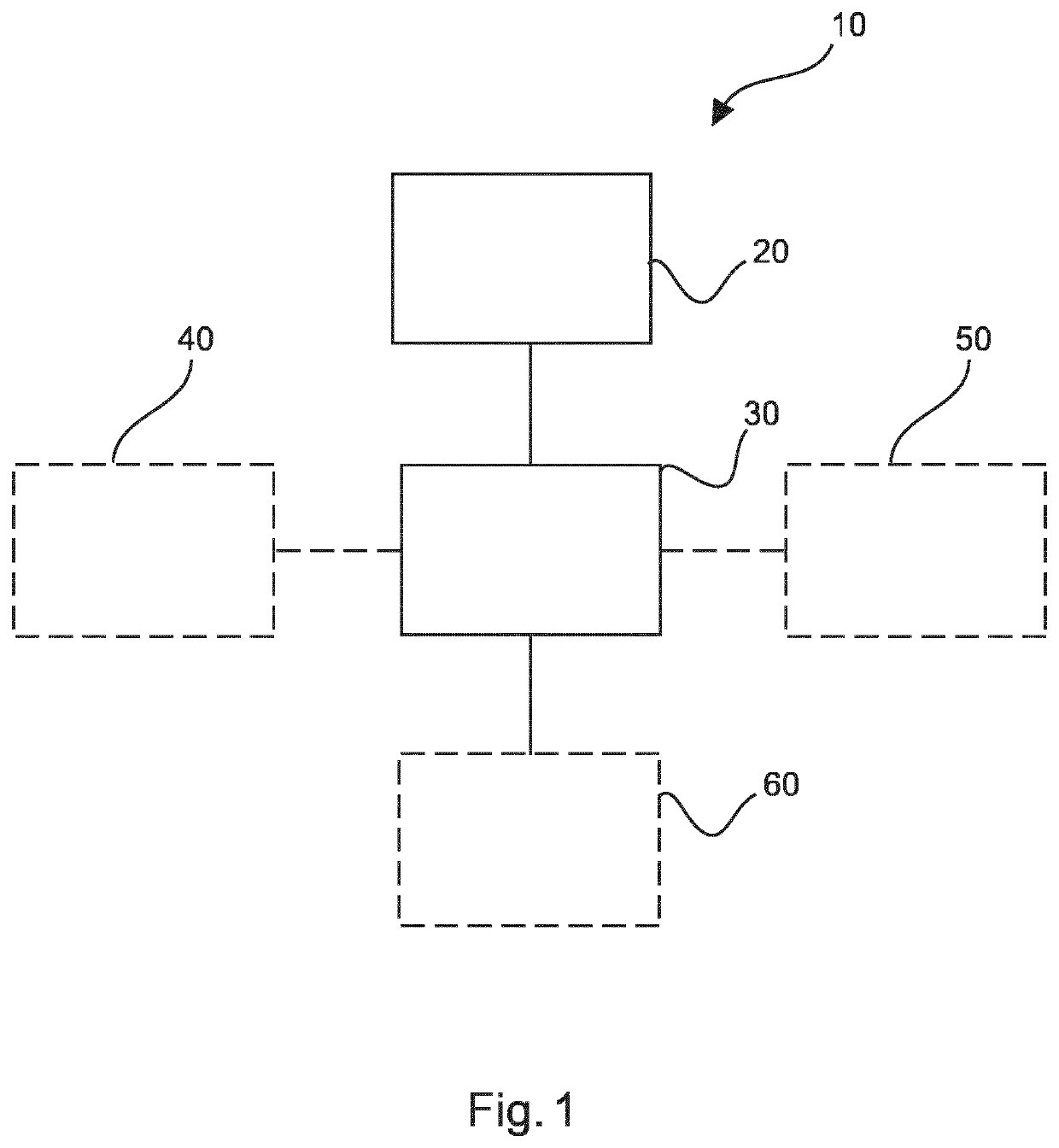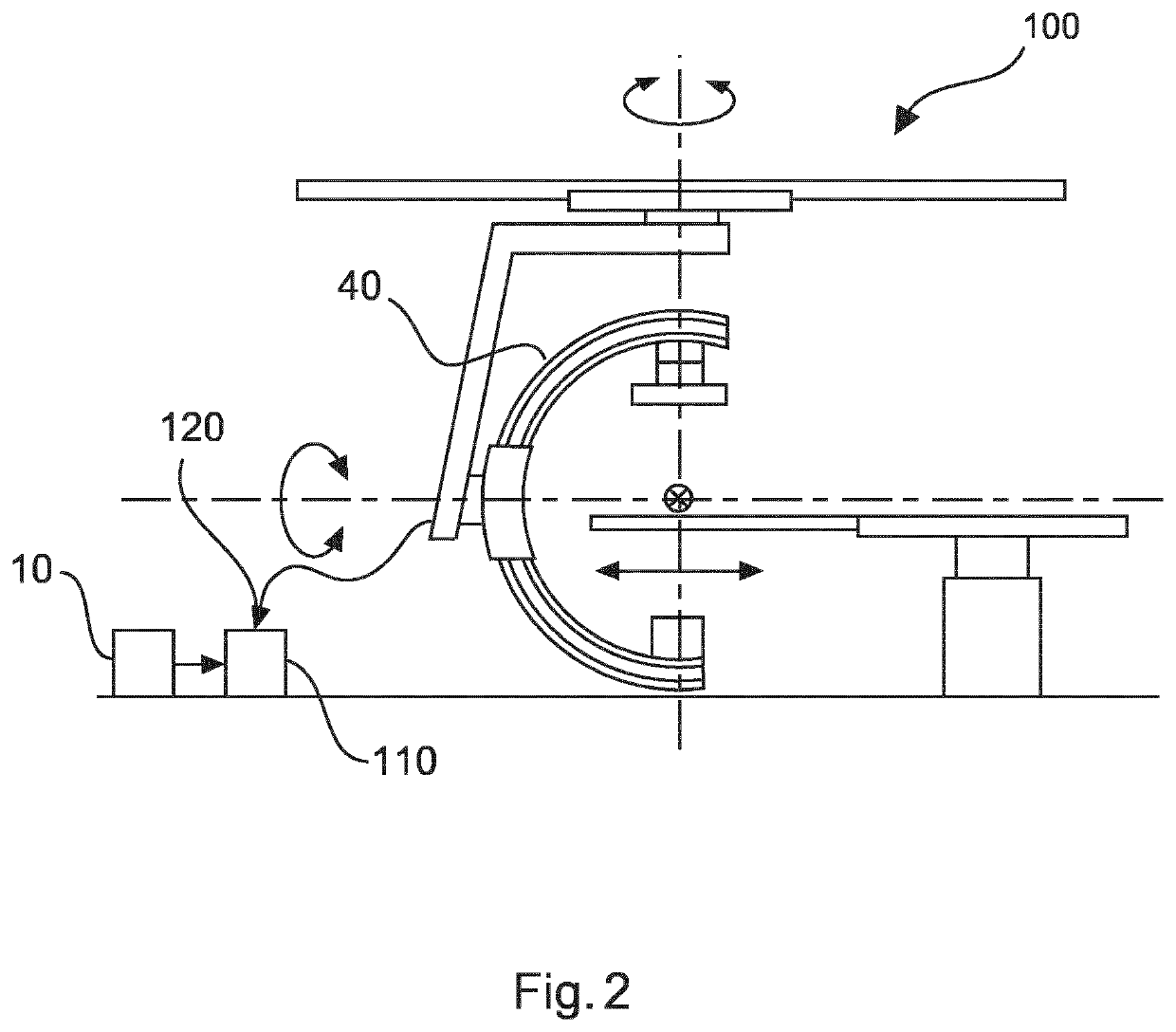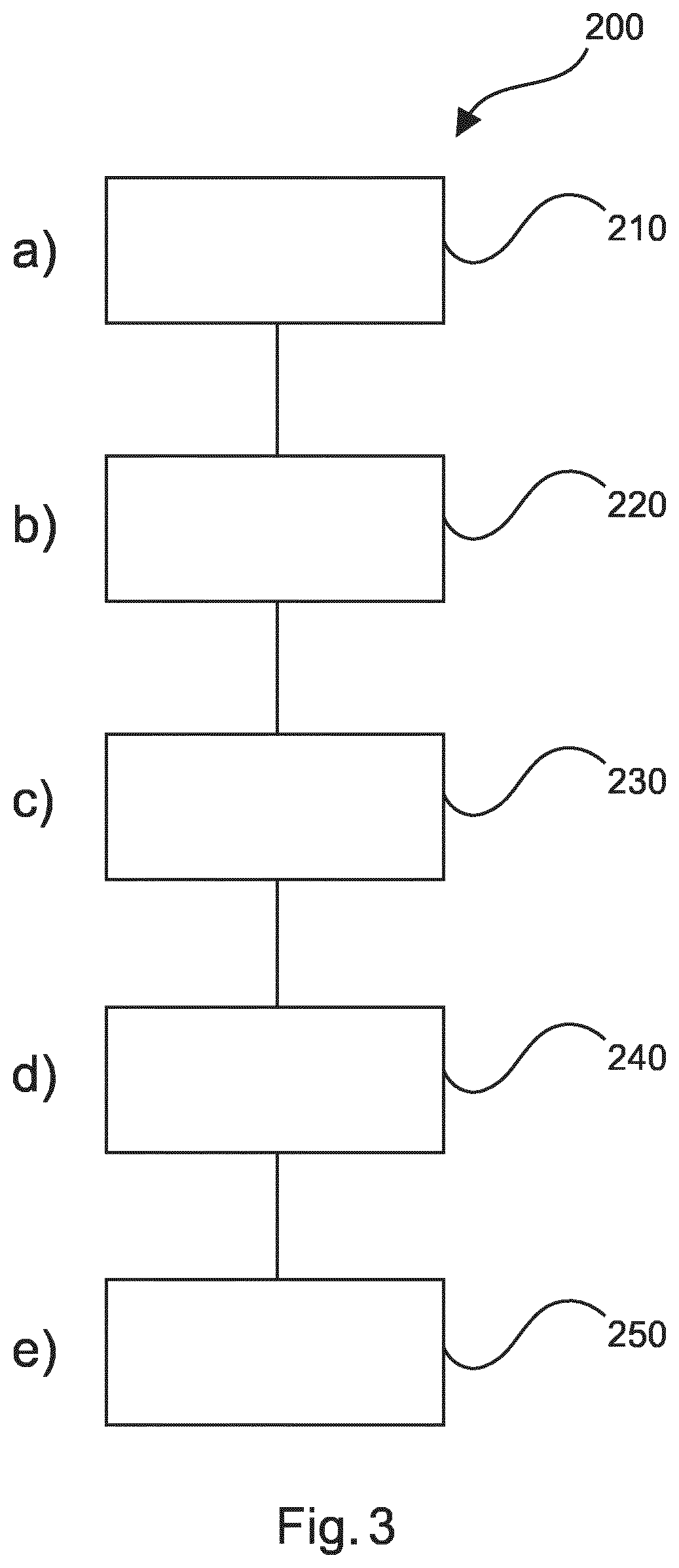Synthetic representation of a vascular structure
a vascular structure and synthetic representation technology, applied in the field of synthetic representation of vascular structures, can solve the problem that it is not easy for clinicians to match features within the angiographic image, and achieve the effect of improving the technique for interpreting angiograms
- Summary
- Abstract
- Description
- Claims
- Application Information
AI Technical Summary
Benefits of technology
Problems solved by technology
Method used
Image
Examples
Embodiment Construction
[0057]FIG. 1 shows an example of an apparatus 10 for providing a synthetic representation of a vascular structure. The apparatus comprises an input unit 20 and a processing unit 30. The input unit 20 is configured to provide at least one 2D X-ray image comprising 2D X-ray image data of a vascular structure of a patient's body part to the processing unit 30. The input unit 20 is also configured to provide a 3D model of the body part, the 3D model comprising a 3D modelled vascular structure to the processing unit 30. The processing unit 30 is configured to determine a 2D projection of the 3D model of the body part, the 2D projection of the 3D model of the body part comprising a 2D projection of the 3D modelled vascular structure. The processing unit 30 is also configured to transform the 3D model of the body part, wherein the transform of the 3D model of the body part comprises a determination of the pose of the 3D model of the body part such that a 2D projection of the 3D modelled va...
PUM
 Login to View More
Login to View More Abstract
Description
Claims
Application Information
 Login to View More
Login to View More - R&D
- Intellectual Property
- Life Sciences
- Materials
- Tech Scout
- Unparalleled Data Quality
- Higher Quality Content
- 60% Fewer Hallucinations
Browse by: Latest US Patents, China's latest patents, Technical Efficacy Thesaurus, Application Domain, Technology Topic, Popular Technical Reports.
© 2025 PatSnap. All rights reserved.Legal|Privacy policy|Modern Slavery Act Transparency Statement|Sitemap|About US| Contact US: help@patsnap.com



